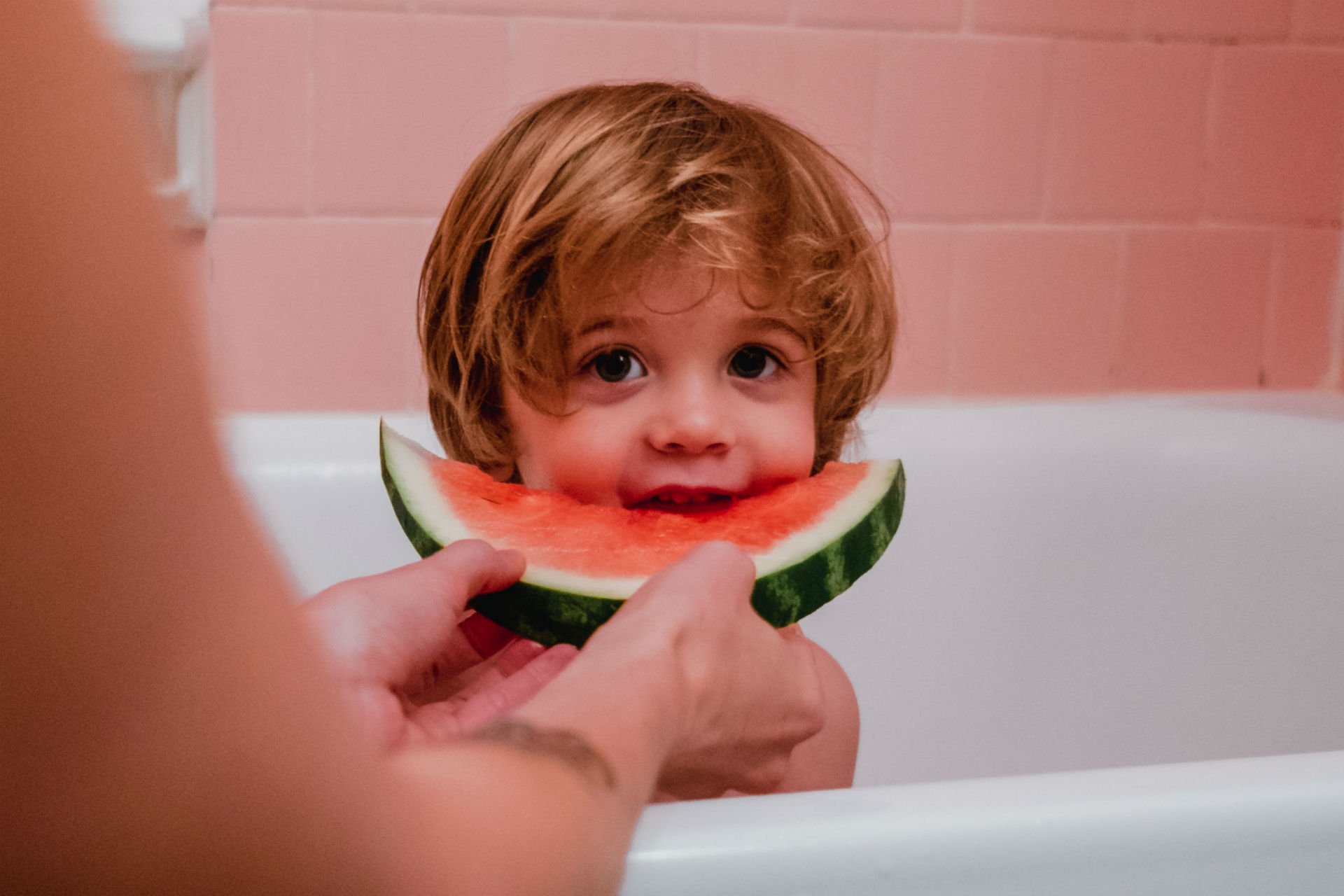Preschool
3 min Read
Tips for feeding your kids fruits and veggies

August 15, 2019
Preschool
3 min Read

August 15, 2019

Show us a parent who brags their kid will eat everything, and we’ll show you a parent who is, well, not 100 percent acquainted with the truth.
The reality is all children go through a variety of eating phases over time. Whether it’s the growth spurt of an infant, the assertion of independence of a toddler or the insatiable appetite of a teenager, our kids’ young growing bodies and minds can wreak havoc with mom’s menu planning.
We’ve both had our struggles with one or more of our children at different times. One of the most baffling and frustrating challenges as a parent can be having a good eater who suddenly switches her eating habits for no apparent reason.
The trick for most parents is navigating these stages while still ensuring their children get their requisite servings of fruits and vegetables every day. Because let’s face it, fruits, but especially vegetables, are usually the first casualty in most families’ dinner table battles.
Brother and sister team Greg and Lori Heller of Toronto’s interactive cooking studio and school, The Chef Upstairs, believe teaching kids to be hands-on in the kitchen is a powerful tool in getting kids to try and like different foods.
“I have seen a huge difference in the children who take classes and what they are willing to try,” says Lori. “They watch the cooking shows and want to be like Gordon Ramsay or Jamie Oliver.”
Indeed, like many aspects of childhood, if you give kids a little ownership in the process, they might be more likely to participate in the finished product. So if they have a stake in menu planning, cooking and preparing meals, it can nudge them to be a little more adventurous with what they’ll try.
However, Greg cautions against giving kids too much autonomy over meals and snacks. “I believe that parents who let their kids make adult decisions struggle with getting their children to eat properly,” he says.
1. Don’t be a junk food junkie. Limit soft drinks or bottled drinks (iced teas, energy drinks, vitamin water, etc.) to no more than once a week as a treat. Eliminate potato chips or store-bought cookies from your pantry. Kids take the path of least resistance and will quickly make these bad snack foods part of their daily diet. Try making one day a week “junk food” day, where kids can eat whatever they like. As you eliminate foods high in sugar, salt and fat from their diets they will slowly stop craving these foods.
2. Get your children accustomed to drinking milk, water and natural limited amounts of 100 percent fruit juice.
3. Keep plenty of fruits and vegetables cut up and available for your kids to snack on. Remember they will always eat what is easiest to reach.
4. Teach kids at a young age to enjoy cooking and making their own food. Make it easy for them to experiment by keeping safe, kid-friendly utensils in reach.
Instead of potato chips, try kale chips.
Instead of milkshakes, try smoothies
Instead of granola bars, try breakfast cookies
Instead of spaghetti sauce, try tomato sauce with extra veggies
Originally published in ParentsCanada magazine, February/March 2012.